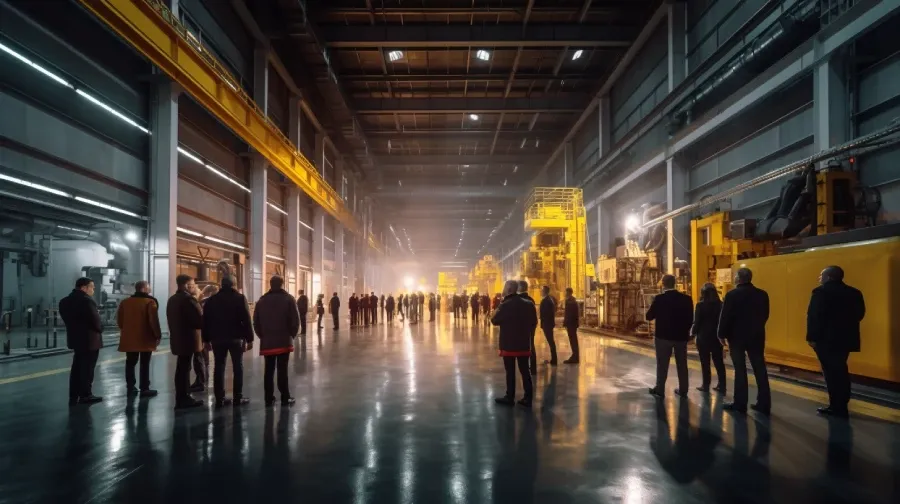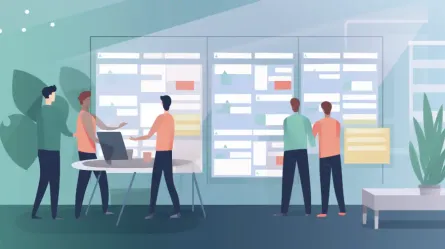How to make a factory tour
- 29 Jul, 2022

In my opinion, factory tours are hands down the best way to create trust between you and your customers. Let’s think it for a second: there are already millions of factories in the world…the fact that your customers have decided to buy from you it’s a huge achievement on its own. They have chosen you instead of all your competitors, so congratulations! Now it’s your turn to impress them, and a good way of doing so is by inviting them to your factory.
Customers are not usually involved in suppliers’ operations, so a factory tour can be an excellent way to show them how good you are. However, it’s not just about showing off your facility; it’s also an opportunity to strengthen relationships, improve your processes, and gain a competitive advantage. In the following paragraphs, I’ll try to share some tips and best practices to help you get the most out of your next visit.
Planning the visit ahead
I’ve been involved several times in factory tours, both as a customer and as a supplier (of course being the supplier is much more stressful) and one of the most important things to be successful is planning ahead and defining the main objective of the visit. It’s not the same a quick visit as a commercial gesture than a factory acceptance test for a new project. It could also be a recurrent visit to address production problems or to help a customer gain confidence in your production capacity. Understanding the primary goal of the visit is crucial, as it will help you tailor the tour and set the tone for the visit.
Once the main objective is defined, you’ll have to set the dates. This is key to ensure the availability of the people involved. This is especially important if the visit is related to a specific project or problem. Make sure that your team is aware of the visit and understands the importance of the opportunity. Provide information about the customer, including their important projects, sales figures, and possible tricky questions that they may ask. This will ensure that everyone is on the same page and can prepare accordingly.
Agree on the Date and Ensure Availability
Once you have defined the objective of the visit, the next step is to agree on the date and ensure the availability of the people involved. This is especially important if the visit is related to a specific project or problem. Make sure that your team is aware of the visit and understands the importance of the opportunity. Provide information about the customer, including their important projects, sales figures, and possible tricky questions that they may ask. This will ensure that everyone is on the same page and can prepare accordingly.
Introduce the Office Staff
Introduce the office staff to the customer and make sure to establish a good relationship. Explain the roles and responsibilities of each team member, including the back-office, engineering, planning, production, purchase, and logistics. Ensure that the customer understands the workflow of your factory and allow them to ask as many questions as they want. This will help build trust and demonstrate your expertise.
Provide Safety Gear
If the visit involves a tour of the production area, provide safety gear to the customer if necessary. This may include hard hats, safety glasses, earplugs, and other protective equipment. Ensure that the customer understands the importance of safety and how seriously you take it at your facility.
Explain Your ERP System
Explain your ERP system and how it is used to manage your manufacturing process. Show the customer how orders are uploaded and how they are broken down into more detailed manufacturing orders. Explain the traceability of each order and how you ensure quality control throughout the manufacturing process. This will help the customer understand how you manage their orders and ensure that they meet their specifications.
Discuss Your Workflow
Discuss your workflow, whether it is make-to-stock or make-to-order. Explain how you plan for each order and how you ensure that each order is produced efficiently and delivered on time. Show the customer how you manage inventory and how you ensure that raw materials and components are always in stock. This will help the customer understand how you manage your production process and how you ensure that you can meet their needs.

Explain Your Machines
Explain your machines, including their capacity, maintenance, and bottlenecks. Provide information about how you ensure that your machines are always running efficiently and how you handle any maintenance issues that may arise. Show the customer how you ensure quality control at each stage of the manufacturing process, including during the use of machines. This will help the customer understand how you manage their orders and how you ensure that they meet their specifications.
Focus on the Quality of Your Material
Put a lot of focus on the quality of the material you use in your manufacturing process. Explain the different types of material that you use and how you ensure that they meet your quality standards. Be prepared for any tricky questions that the customer might ask, such as how long the metal lasts or what about corrosion. Show the customer how you handle any issues related to material quality and how you ensure that your products meet their specifications.
Show the Work Instructions
Show the customer the work instructions that your workers have for each order. Explain how changes are handled and how you ensure that each worker knows exactly what they need to do for each order. This is crucial for the customer to understand, as changes happen quite often in the manufacturing process. Show the order-related documents that the workers have, and explain how they are used to ensure that each order meets its specifications.
Show Your Quality Procedures and Digital Tools
Show the customer your quality procedures and digital tools that you use to ensure quality control throughout the manufacturing process. This is where you can showcase the quality apps, control tools, and digital boards that you use to monitor and manage your production process. Explain how you use these tools to ensure that each order meets its specifications and how you track and manage any issues that may arise.
Show the Warehouse
Show the customer your warehouse and how you manage your inventory. Show them how you make the forecast of the raw material and components and how you store incoming material and finished product. Explain how you manage your inventory and how you ensure that you always have the right materials on hand to meet your customers’ needs.
Take Time for Questions
Once you finish the factory tour, take a small break, enjoy some more coffee, and allow time for questions. If you have no answer for something, try to get an answer from your team. In case you don’t have it, write it down and follow up ASAP. This is key; we have to be absolutely proactive. Ensure that all the customer’s questions are answered, and take the time to address any concerns that they may have.
Finish with a Big Thank You
Finally, finish the meeting with a big thank you and don’t forget to follow up on any unanswered topics. This will help leave a positive lasting impression on your potential customer and show them that you value their business. Follow up with any action items that were discussed during the tour and ensure that they are addressed promptly.
In conclusion, a factory tour is an excellent opportunity to showcase your manufacturing capabilities and build trust with potential customers. Ensure that you define the main objective of the visit, agree on the date and ensure availability, and make a great first impression. Use the opportunity to showcase your workflow, machines, and quality procedures. Take time for questions, and finish with a big thank you. By following these best practices, you can ensure that your factory tour is a success and help you gain a competitive advantage in your industry.


